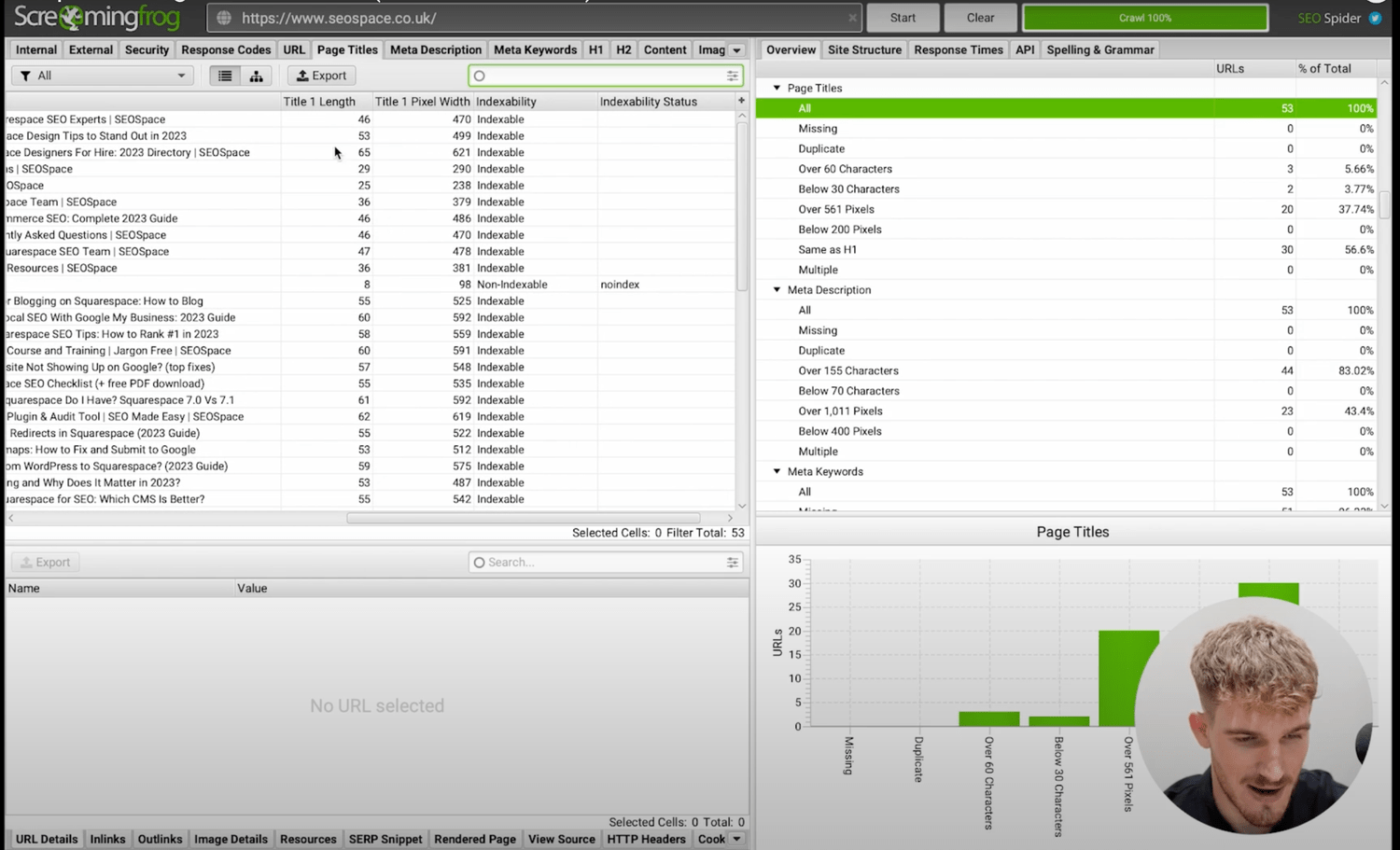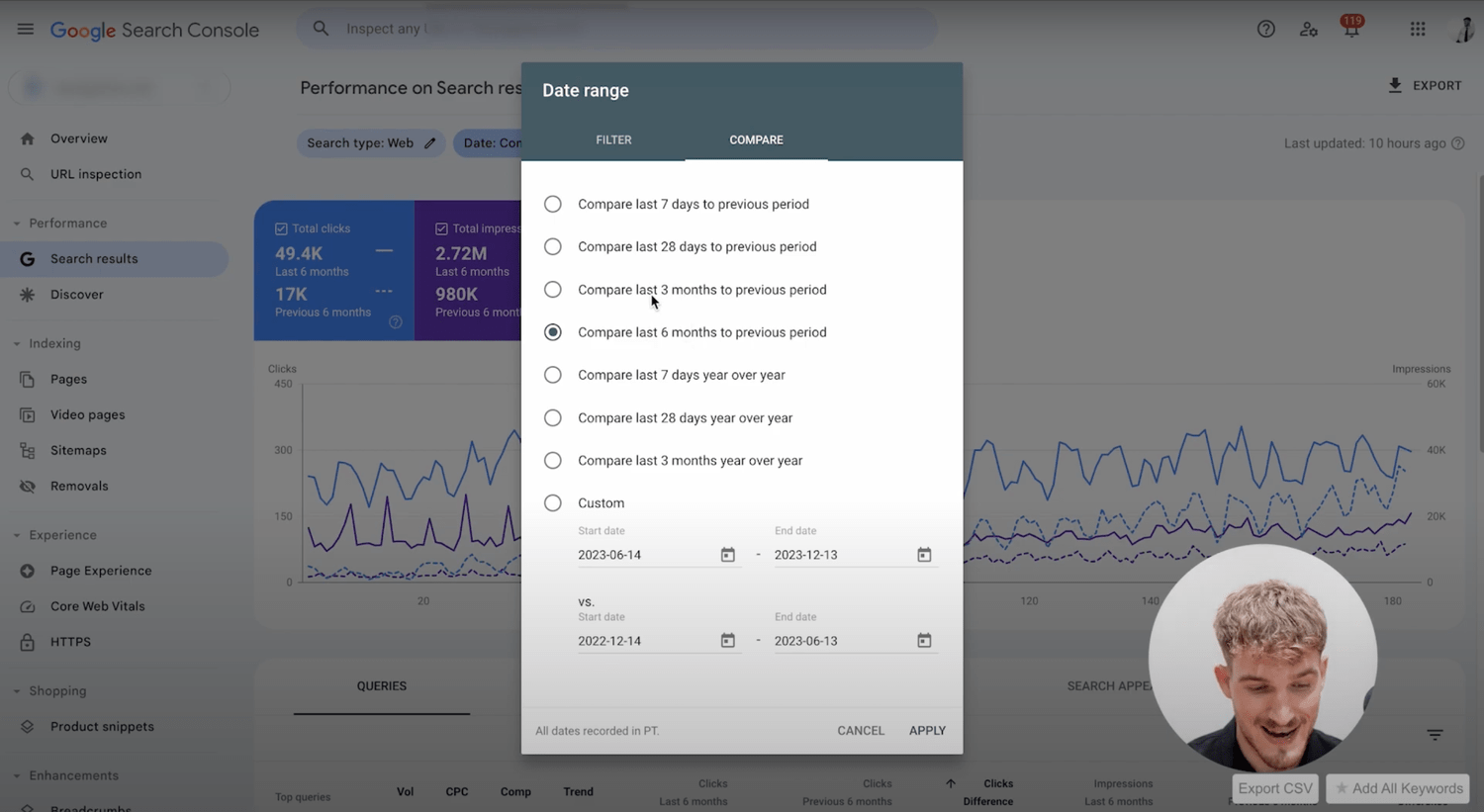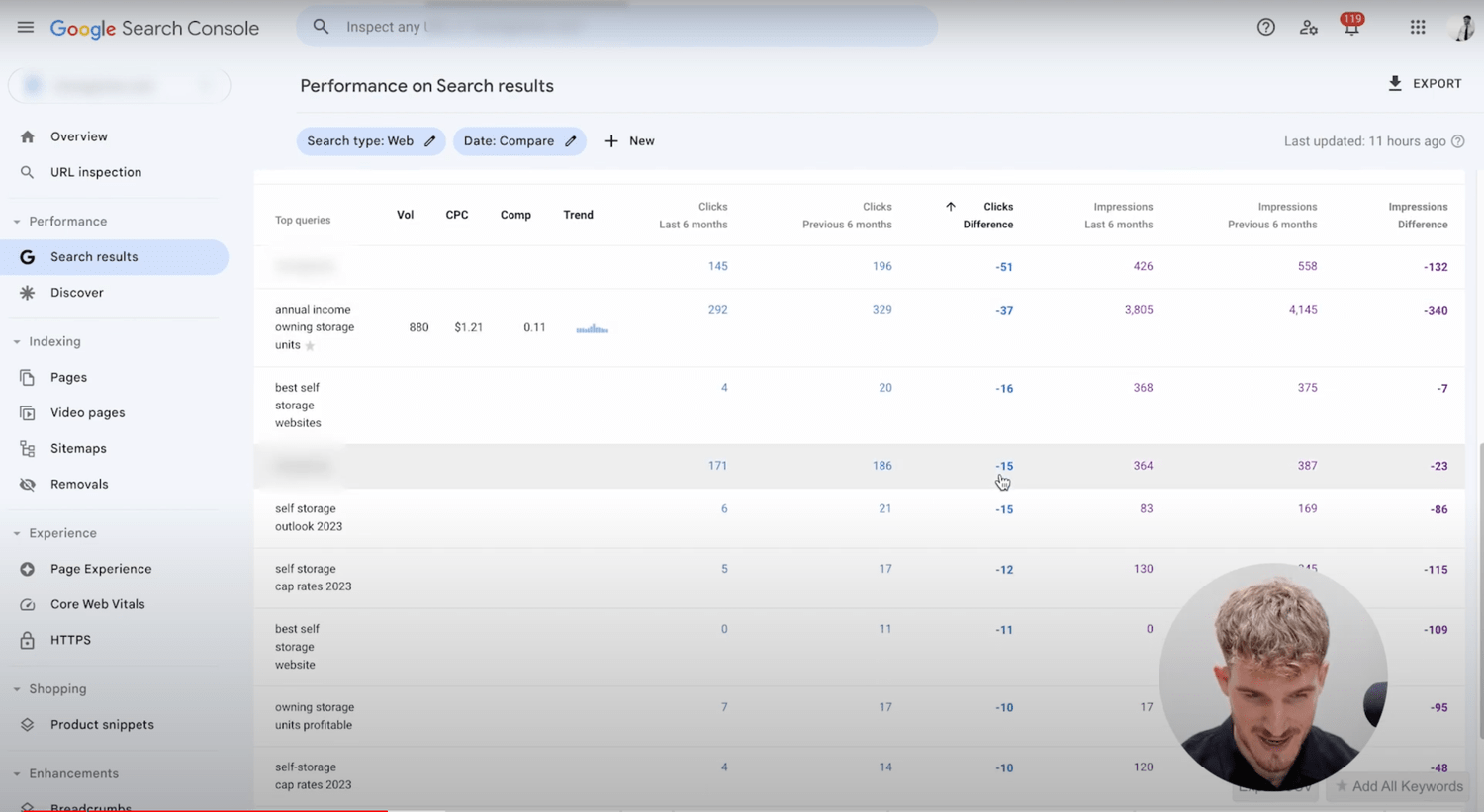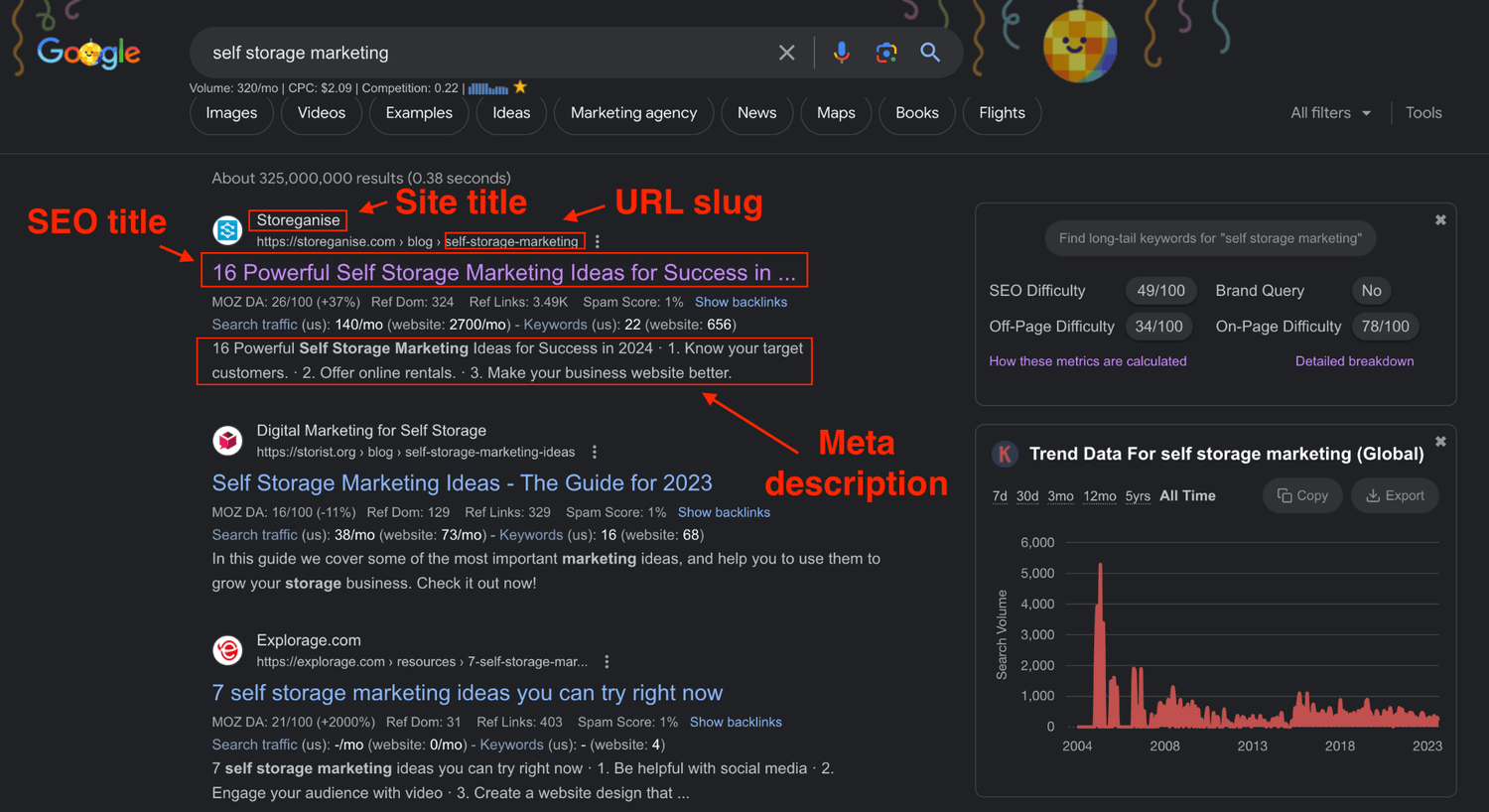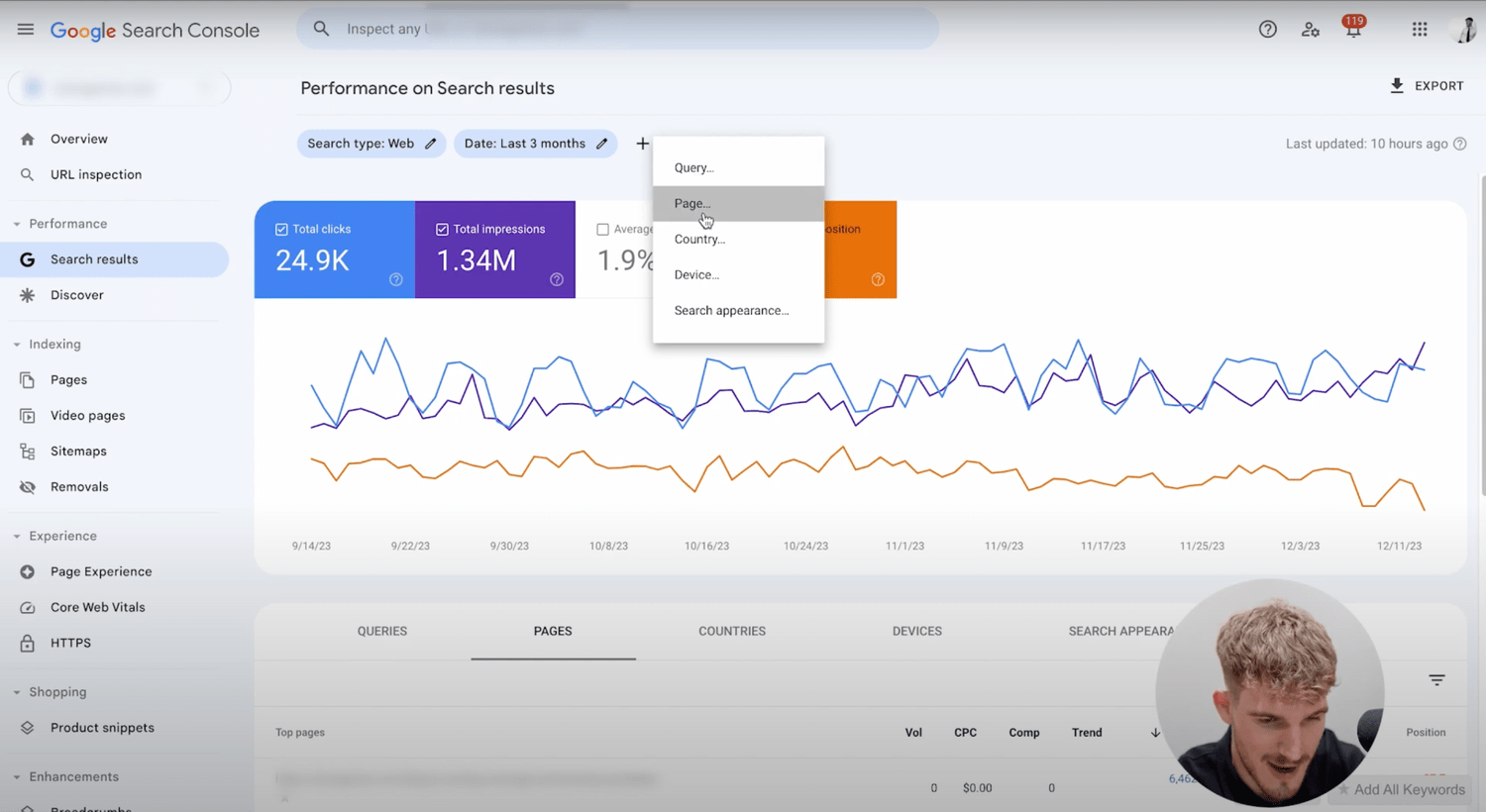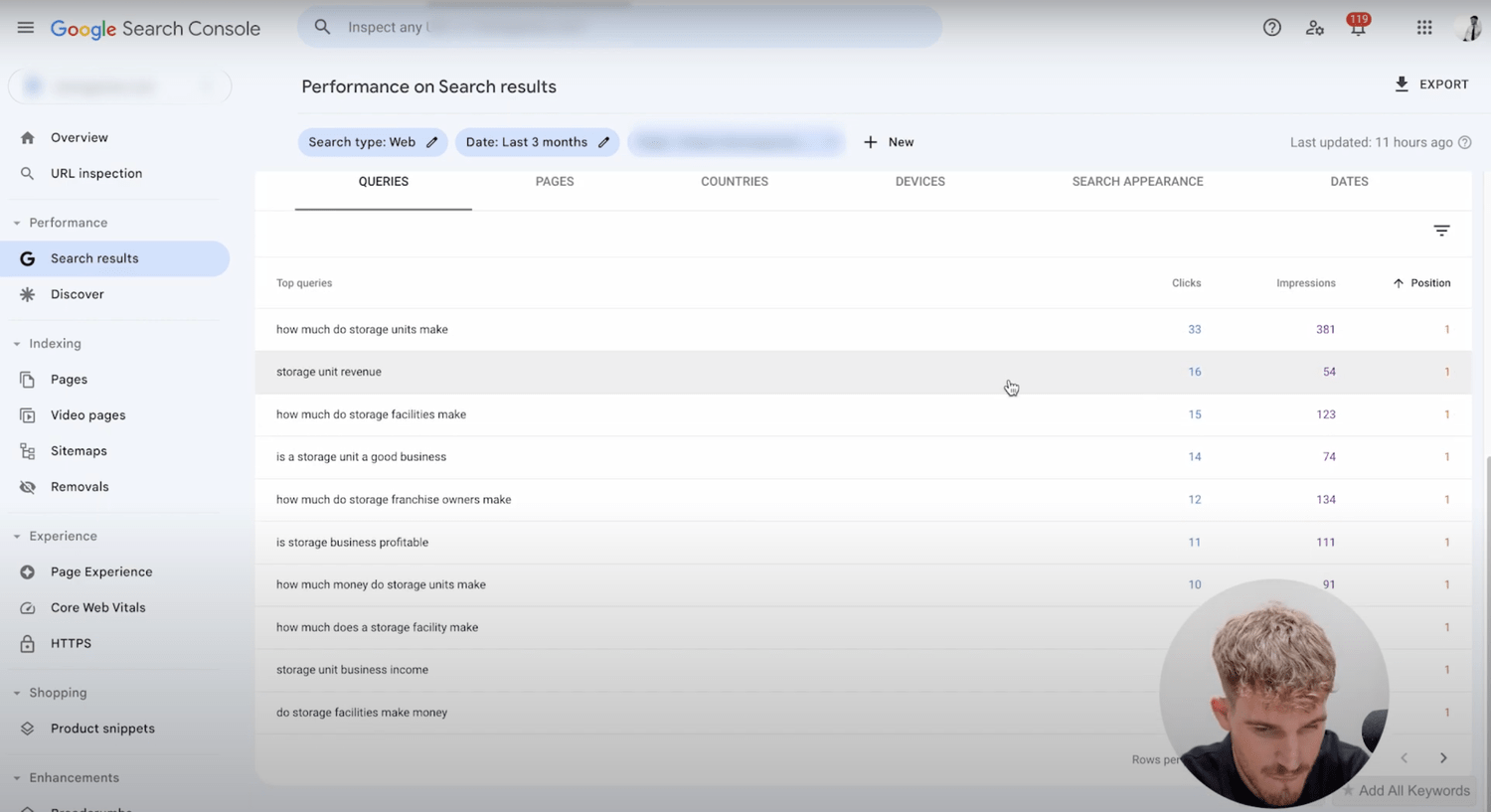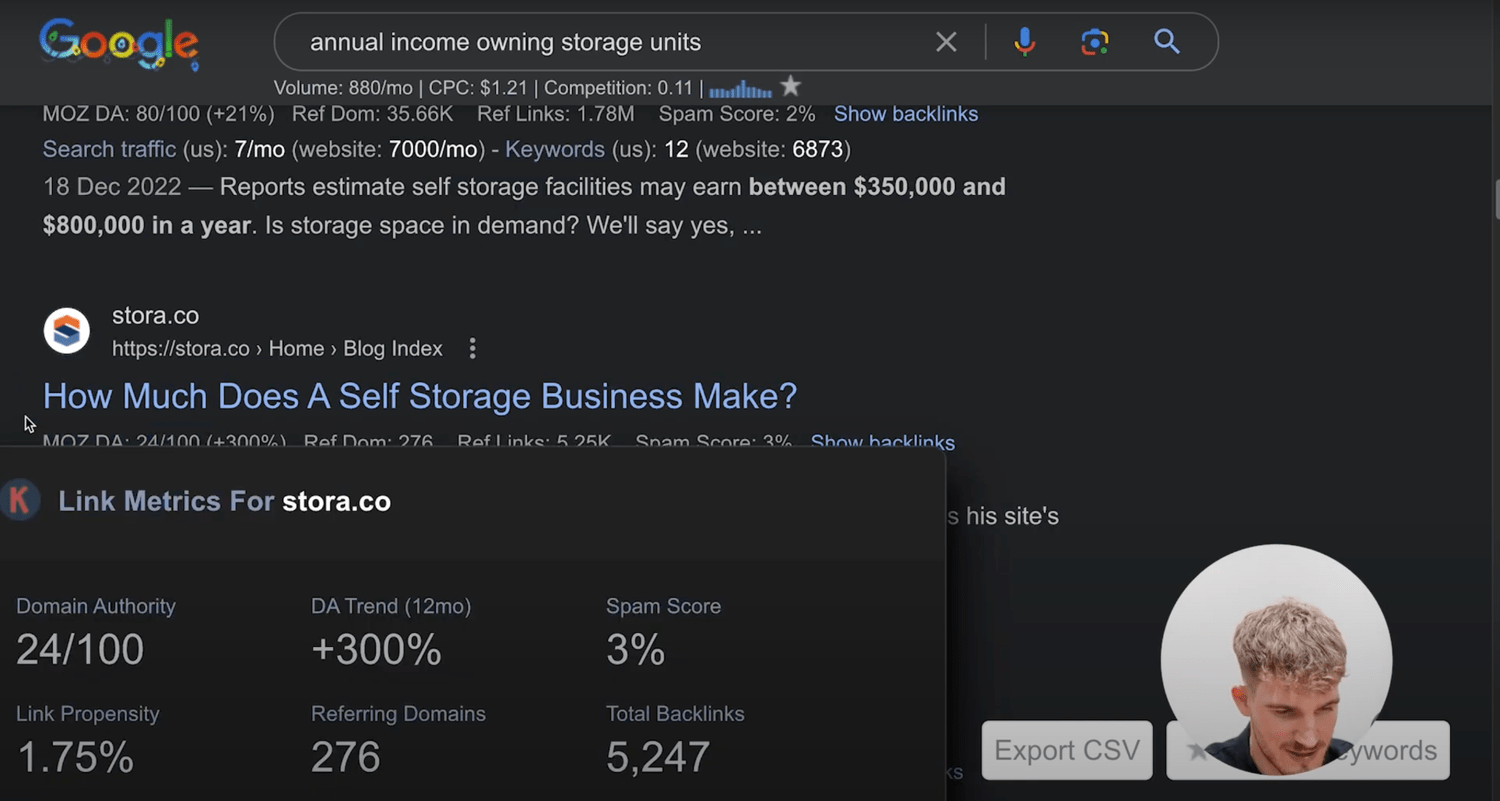How to Optimize Blog Posts for SEO: Ultimate 2024 Guide
Imagine dedicating so much time and resources to write and publish a blog post, only to discover it’s not showing up on Google search results. Super frustrating, right? If you’re facing this frustration, you might be thinking “how to optimize blog posts for SEO?!”.
The success of a website or blog is largely dependent on its ability to rank on page 1 of Google search results. In fact, only 3.99% of users pay attention to the second page of search engine results pages (SERP). To rank higher, you must take your search engine optimization (SEO) game seriously, especially when it comes to your website content, like blogs — both new content and existing ones.
As leading SEO experts with years of experience and a top-rated Squarespace SEO plugin, we know exactly how to optimize blog posts for SEO, and we’ll show you how in this post.
You can start by watching this video where Henry Purchase, the founder of SEOSpace, shares the 4 tools he uses to dominate search engines in 2024:
Tip: If you’re considering setting up a new website, consider opting for the best Squarespace templates for SEO. They feature built-in SEO prompts to optimize on-page elements, helping you rank properly on search engines.
5 Times When You Need to Optimize a Blog Post for SEO
Before we dive into the various tweaks you can make to optimize blog posts for SEO, let’s start by understanding why you’ll need to make these changes in the first place.
Here are 5 reasons why you’ll need to optimize a blog post for SEO:
You’re creating a new blog post.
You have outdated content.
Your content is dated.
Your content is no longer performing well.
Your content has a bad SEO score.
1. Creating a New Blog Post
The best time to optimize a blog post for SEO is right from the content ideation stage. Implementing the finest SEO practices at this stage—which we’ll delve into later—is critical for enhanced visibility and helps usher an influx of leads to your business courtesy of increased exposure.
2. Out-of-Date Content
Content that has become outdated can be detrimental to your search rankings and your credibility. Outdated content includes articles where recent developments no longer align with your past viewpoint.
If you realize that a piece of content has fallen out of trend, it’s worth considering an update. Refreshing your content not only ensures its relevance but also augments your SEO efforts, positioning you favorably in search results and reinforcing your authority in your field.
3. Dated Content
Dated content, such as an “Ultimate 2023 Guide,” can quickly lose relevance as time progresses. It’s essential to keep such content updated to maintain credibility and search engine ranking through optimization. Blog tools like Screaming Frog, a highly efficient website crawler, can help you through this step. This tool can help you sift through your website’s meta tags (meta descriptions and SEO titles) to identify content that may be back-dated.
Once you’ve identified the dated content, the next step is to update it to mirror the current period. For instance, updating an “Ultimate 2023 Guide: to an “Ultimate 2024 Guide” can add a fresh perspective and keep it relevant to the audience. Simultaneously, it’s important to modify the upload date of the content as well.
Updating the upload date allows Google and other search engines to recognize that your content is new or updated, which can significantly enhance your search ranking. After updating the content and the upload date, ensure you request indexing again using Google Search Console. This step notifies Google about the changes, helping your updated content get crawled and re-indexed faster, thus maintaining your website’s SEO health.
Note: Crawling and indexing are terms used to describe the process where the pages of a website are analyzed and included in a search engine’s list of pages for ranking.
4. Underperforming Content
It’s essential to keep a keen eye on content that has stopped performing as expected. Google Search Console can offer invaluable insights into your keyword performance. To access these insights, navigate to “Compare” >>> “Compare last 6 months to the previous period.” This action will provide you with a performance comparison, shedding light on keywords that have fluctuated in their effectiveness.
As you peruse the results, scroll down and click on “Difference” for a closer look at the performance of individual keywords. This comparison will highlight the keywords that have dropped in performance, leading you to the content that may need updating.
Select a keyword to filter out content associated with that particular keyword. Simply click on "Pages" to identify the exact pages that might require optimization. These pages once performed well due to the keyword, and with some SEO fine-tuning, they can potentially regain their former glory.
Remember, the digital landscape is dynamic, and content needs to evolve with it. Regularly revamping underperforming content based on keyword performance can help maintain your search engine rankings and keep your content relevant and engaging.
5. Pages With Bad SEO Scores
In cases where your blog has a poor SEO score, you’ll need a blogger optimization tool to ensure it remains relevant. For instance, our freemium Squarespace SEO plugin is a superb resource for Squarespace users. The plugin does more than just give you a score for each blog page; it also provides valuable recommendations on how to improve SEO on those pages.
Actionable insights from this tool can include suggestions on keyword placement, image optimization, link-building, meta descriptions, etc. All these are essential components that play a pivotal role in enhancing your blog’s SEO score and, ultimately, your site’s visibility on search engine result pages.
For more comprehensive guidance, our Squarespace SEO checklist is an excellent reference point for Squarespace users. It offers a detailed walkthrough on how to maximize your SEO efforts within the Squarespace ecosystem.
However, our SEO plugin is not the only tool at your disposal. Other tools like the Seobility SEO Checker and SEOptimer provide equally valuable insights and suggestions. With these tools, you can ensure your blog posts are not only engaging but also well-optimized for search engines. This strategy ultimately leads to improved traffic and higher conversion rates — a win-win situation for any blogger or business.
Next, we’ll outline the steps involved in optimizing blog posts — when creating fresh content and when you may need to tweak existing content.
How to Optimize a New Blog Post for SEO in 5 Steps
Publishing new blog content regularly is a great way to establish yourself as an expert in your industry and increase your ranking on search engine result pages (SERPs). However, it needs to be done right!
Here’s how to SEO optimize a blog post in 5 simple steps when writing a fresh article from scratch:
Conduct in-depth keyword research.
Analyze your top competitors.
Adopt on-page SEO best practices.
Create compelling content/blog posts.
Build backlinks and citations.
Step 1. Conduct in-depth keyword research.
Keywords are those words or phrases your target audience type into Google when searching for your products or services. Choosing the right keywords is crucial to blog SEO optimization, as it ensures your blog posts rank high in the results Google returns for customers/readers’ search queries. In fact, keyword research is the key first step that informs everything else you do when creating new blog content.
To conduct keyword research, follow these steps:
Identify your primary keyword.
Start with a few terms and phrases related to your topic that potential readers might use in their search queries.
Use tools like Keyword Everywhere and Ahrefs to expand your list.
Enter your seed terms and look for keyword ideas and related keywords.
Focus on keywords with low difficulty and high search volume.
The image illustrates keyword research for this blog post, using Keywords Everywhere to find low difficulty, high volume keywords.
Categorize keywords by intent.
Group keywords based on what the searcher wants — to learn, compare, buy, etc. In other words, the customer’s stage in the sales pipeline.
You’ll need to create a landing page to search for the keywords that users search for when they want to buy. And informational keywords for blog content.
Your blogs should link back to your landing page.
For more hands-on instructions, check out this live SEOSpace webinar on keyword research. The key is finding the optimal balance between highly competitive, short-tail keywords and overly narrow, niche long-tail keywords. With some experimentation, you’ll get better at identifying those SEO keywords that are just right!
Step 2. Analyze your top competitors.
Doing competitor research is crucial to find out what other similar blogs are doing for their SEO strategy. This will help you identify gaps and opportunities to optimize your content and outrank your competitors.
Here’s how to conduct competitor research:
Start by making a list of your main competitors — the top 5–10 sites that rank well in search for your target keywords.
Analyze their on-page SEO, including:
Page titles and meta descriptions
Use of target keywords
Content structure and formatting
Image optimization
Internal linking
Doing competitor analysis will give you ideas for optimizing blog posts for SEO as well as blog content ideas. The goal isn’t to copy what they’re doing but to use it as inspiration to stand out with even better SEO and content.
Step 3. Adopt on-page SEO best practices.
Optimizing your on-page SEO ensures search engines can easily crawl, index, and understand your content. This helps improve rankings so the right searchers find your blog posts.
Consider the following tips when optimizing the on-page SEO aspect of your blog posts:
Use your target keyword in the blog post title, subtitles, first paragraph, and as naturally as possible throughout the content. Don’t over-optimize, or it will read unnaturally. This is known as keyword stuffing and can result in penalties from Google.
Include related long-tail keywords and phrases throughout as well to cast a wider net. For example, if your primary keyword is “blog optimization SEO,” related keywords can include “top SEO tips for bloggers” or “how to do Squarespace site SEO.”
Use descriptive subheadings (H2, H3) to break up text into scannable sections.
Include multimedia like images, charts, or videos. Optimize them with descriptive file names and ALT text that contains your target keyword.
Write high-quality content that offers value to readers. Use transitions between sections and headings so ideas flow logically.
Check word count and readability. Aim for a word count that’s slightly above what top-ranking competitors publish with a grade 7–8 reading level using free tools like the Hemingway App.
Format the post properly using white space, line breaks, and emphasis (bold, italics) to direct the reader’s attention.
Following on-page best practices for SEO ensures search engines can effectively crawl and index your content. However, focusing on technical aspects only won’t guarantee high ranks on Google; you equally need to craft blog content that offers real value to readers.
Step 4. Create compelling content/blog posts.
Don’t just create content; create what people value. This is because Google prioritizes value and relevance when deciding which web pages to return for search queries.
Follow these tips to craft an SEO-friendly blog post that captivates readers and is likely to be indexed by search engine bots:
Focus on quality over quantity: Don’t just churn out posts to have more content. Rather, make each one count by thoroughly researching your niche and providing value to your readers. The blogs that rank highest often have fewer posts that offer truly useful advice.
Incorporate your talking points: Mention facts and statistics from reputable sources to establish your credibility on the topic. Call out unique insights from your own experience, too.
Structure content for scannability: Break up walls of texts with subheadings, bullet points, images, quotes, etc, to ease readability.
Link to other reputable sites: This shows you’ve done your homework and provides the reader with additional trustworthy resources on the subject.
Be the teacher: Educate your audience by clearly explaining concepts or walking through processes in easy-to-digest steps. Teach them something new in every post!
A thorough blog post SEO optimization process may require some time and effort, but the benefits are well worth it. Posts that truly inform and engage readers are the ones that will rank well on search engines and are key to building a loyal following over the long haul.
Step 5. Build backlinks and citations.
Link building is one of the most crucial yet often neglected aspects of optimizing blog posts. This is the process of having other websites include links to your blog pages in their content. Reports suggest that Google’s #1 result typically has 3.8x more backlinks than results in positions #2 to #10.
The below screenshot shows how we were able to obtain a backlink on Yahoo Finance for one of our clients, Storeganise.
Here are some tips to build quality backlinks that will boost your domain authority:
Offer value to your readers: Backlinks should arise naturally when you consistently publish unique, high-quality content. If other sites find your content valuable, they may be interested in referencing or linking to your content.
Reach out strategically: Identify influential websites and pages in your industry and request backlinks from them. Focus on sites with high domain authority and relevant content. Politely ask if they would consider linking to your content when relevant.
Leverage social media: Share your new posts on social media. If the content resonates with your audience, you may pick up links as it gets shared around.
High-quality backlinks take time and effort to build, so patience is key. With time, these SEO best practices often lead to impressive results — increased website credibility, visibility, and rankings.
So far, we’ve discussed the blog optimization process for new blogs uploaded to your website. How about content that has been published on your website already? How do you optimize them for SEO? Keep reading to find out!
How to Optimize Blog Posts for SEO - 4 Steps Guide to Optimize Existing Blogs
While creating new content is essential, you shouldn’t overlook the importance of optimizing your existing blog posts for better SEO ranking.
Here’s how to optimize a blog that has been previously published on your website for SEO:
Check the page performance with Google Search Console.
Sort keywords by average position.
Naturally re-introduce the keywords into your blog posts.
Do competitor research for poor-performing keywords.
Step 1. Check the page performance with Google Search Console.
Start by evaluating your blog post’s current SEO performance using Google Search Console.
To do this, head to your Google Search Console dashboard and navigate to “Performance” >>> “Search Results” >>> “New” >>> “Page.”
Here, you have to enter the URL of the blog post to be updated. The console will provide you with details about the post’s clicks, impressions, and search terms over time. This data will give you a comprehensive overview of how well your post is performing in terms of visibility and engagement.
Step 2. Sort keywords by average position.
The next step to optimize your blog for SEO is to focus on your keywords.
Select “Average Position” from the list of metrics at the top of the Google Search Console.
Click on “Position” under “Queries” to sort your keywords by their ranking.
Now, look for the keywords that ranked between positions 4 and 10. These keywords are already performing well, but they’re not at the top yet. So, they present an excellent opportunity for improvement.
Step 3. Naturally re-introduce the keywords into your blog posts.
Take these high-performing keywords and strategically re-introduce them into your blog posts. Remember, you’re trying to improve your blog’s ranking for these keywords, so use them wisely. Focus on incorporating these keywords naturally within your blog content. The aim is to enhance your blog post’s relevance and visibility to those searching for these specific terms.
Step 4. Do competitor research for poor-performing keywords.
Conduct competitor analysis for any keyword you’ve lost ranking for, i.e., keywords not in the first 10 positions. Install a plugin like “Keywords Everywhere” and search for the term on Google. The plugin will provide you with various metrics, like search volume, CPC (cost per click), and competition data. Look for those pages with a low domain authority but a higher position for the keyword — they most likely have good SEO.
Study this page carefully. What are they doing differently? Maybe their content is more comprehensive, or they use multimedia elements like videos and infographics. Use this information to write better, more engaging content that surpasses your competitor’s. Remember, quality content is king in SEO.
Tip: Don’t forget to incorporate the SEO best practices.
During existing blog SEO optimization or when writing a new one, always implement the following SEO strategies:
On-page SEO, which involves optimizing individual web pages with relevant keywords and high-quality content.
Off-page SEO, which includes actions taken outside your website to impact your rankings within search engine results pages, such as backlinks from other sites.
Technical SEO, which focuses on improving the backend structure and foundation of your website for better search engine crawling and indexing.
Although we’ve mentioned certain tools for updating blog posts in this article, the next section outlines our top 3 recommendations.
3 Recommended Tools for Updating Blog Posts
As you update and optimize your blog posts with our blog SEO tips, take advantage of these essential SEO tools:
SEOSpace
Surfer SEO
Screaming Frog
1. SEOSpace
The SEOSpace SEO plugin for Squarespace is a tool trusted by many for blog optimization suggestions and more. Simply launch it on any webpage and it will analyze your content, identifying issues and providing tailored recommendations to improve your SEO.
Features:
Quickly diagnose technical, on-page, and off-page optimization opportunities.
Receive step-by-step guidance tailored to Squarespace sites.
Continuously monitor and improve page rankings over time.
2. Surfer SEO
While SEOSpace is purpose-built for Squarespace, Surfer SEO works with any site. Simply paste in a target keyword and the URL of the page you want to optimize. Surfer will analyze the content and provide specific recommendations to improve ranking for that term.
Features:
Identify issues preventing rankings for a given keyword.
Receive clear, actionable suggestions to resolve those issues.
See how your page compares to ranking pages for ideas.
3. Screaming Frog
This desktop software crawls your entire site to identify SEO issues.
Features:
Find and fix crawling errors.
Check for duplicate content.
Audit technical SEO site-wide.
Identify outdated page elements.
With these cutting-edge tools at your disposal, you can update any blog post to maximize visibility and traffic from organic search. Make sure to continue to optimize on-page content, page speed, mobile usability, and more to keep each post ranking high. See our Squarespace SEO tips for more details.
Frequently Asked Questions
What is blog optimization in SEO?
Blog SEO optimization is the process of enhancing your blog’s visibility for search engines. It involves on-page optimization (e.g., keyword usage, adding internal and external links, and content quality), technical aspects (e.g., site architecture and page loading speed), and strategic elements (e.g., plugins, extensions, and internal linking) to improve ranking and attract organic traffic.
What makes a good SEO blog post?
A good SEO blog post starts with thorough keyword research and employs strategic use of headings for structure and clarity. It’s optimized for featured snippets to enhance visibility and is written in an engaging, conversational style, prioritizing the reader’s experience over search engine algorithms.
How do I create an optimized SEO blog post?
Creating a blog post optimized for SEO involves in-depth keyword research, using headings for clarity, and optimizing for featured snippets. Write engaging content for humans, not search engines. Make sure to optimize your title, include keywords in your meta description, add alt text to images, include internal links to other content on your website, and avoid keyword stuffing.
How many blog posts a day for SEO?
Publishing one blog post a day is okay for SEO purposes. Still, posting 2 blogs weekly can generate a decent amount of results for new websites in particular. Overall, it’s important to prioritize quality over quantity. Long and engaging articles, typically ranging from 1,000 to 2,000 words and optimized for SEO, tend to yield better results.
Conclusion
SEO for blog posts can get technical, but it doesn’t have to be rocket science with the right tools and strategy. At SEOSpace, we aim to simplify the process of how to optimize blog posts for SEO through our Squarespace SEO plugin. Adopt the best practices outlined in this guide, and you’ll be well on your way to enjoying higher search engine rankings.


